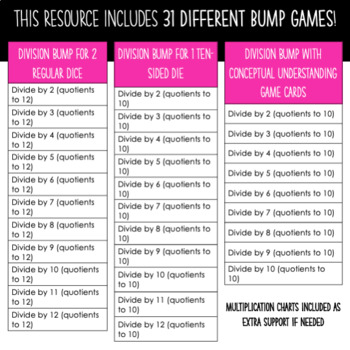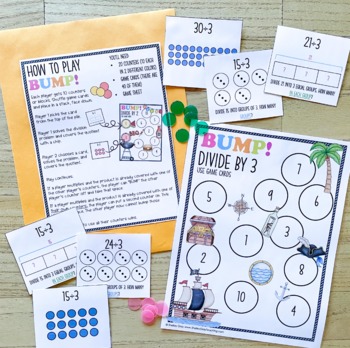Division Bump Games - Fun Dividing Dice Games for Fact Fluency With Arrays
- PDF
What educators are saying
Description
Division Bump is a fun partner math game that reinforces basic division facts. It’s a great alternative to worksheets or other paper and pencil activities. Imagine your students begging you to practice division?!
This resources includes Bump games for basic division facts in THREE different formats.
Version One: The Bump your students know and love (just print and play)!
Use two regular dice. Roll, add, and find the expression with that quotient.
Version Two: 10-sided dice alternative
Roll and find the expression with that quotient. Use "0" to represent "10."
Version Three: Designed for conceptual understanding! We know that students need to see division in many different ways, so the games we play should reflect that!
Use the accompanying game cards instead of dice.
Game cards include equal groups, arrays, and bar models.
This resource includes 31 different Bump games (see preview for full break-down)! Use them year-round at a math center to reinforce division fact fluency in a fun, engaging way!
Just print and play!





